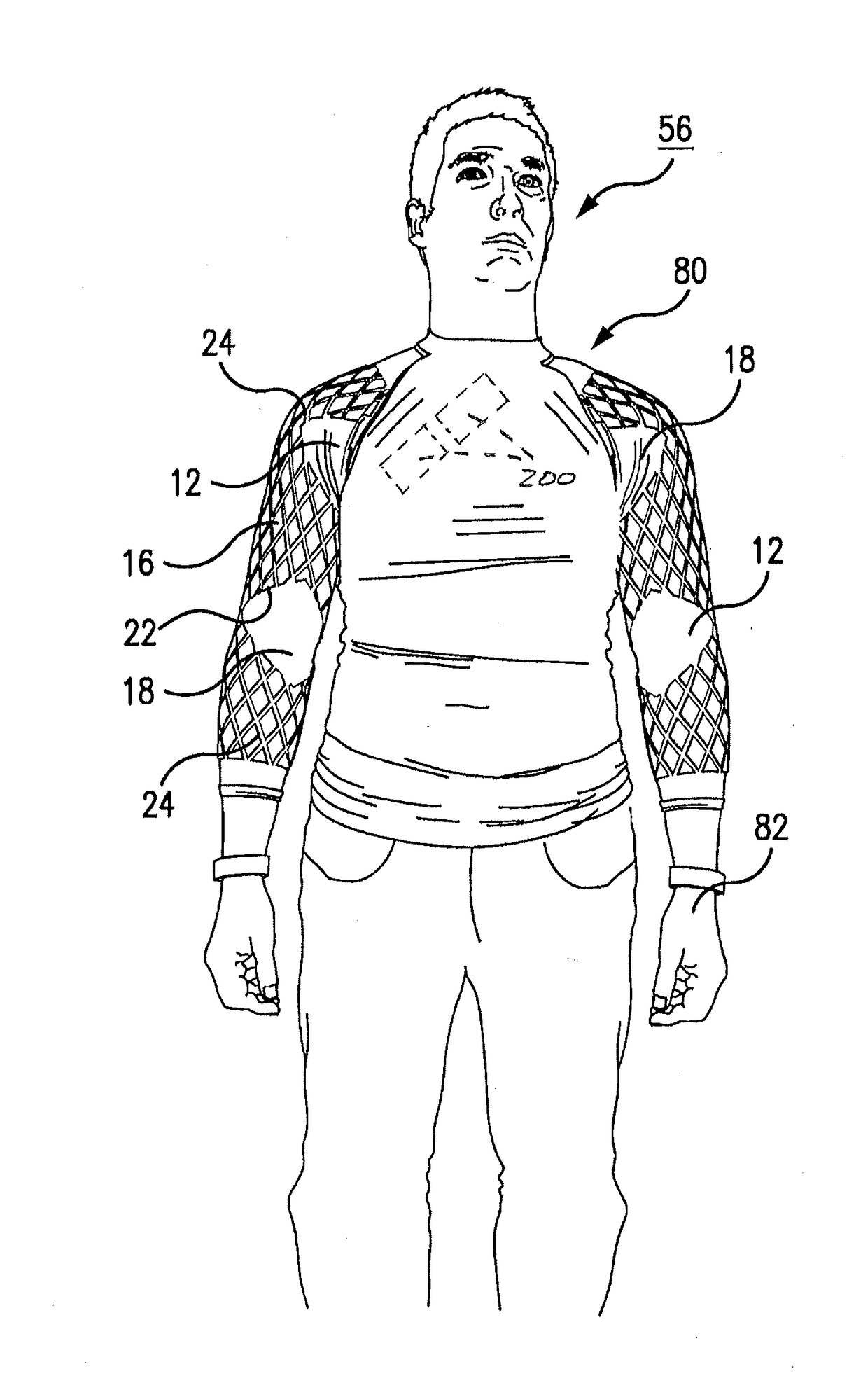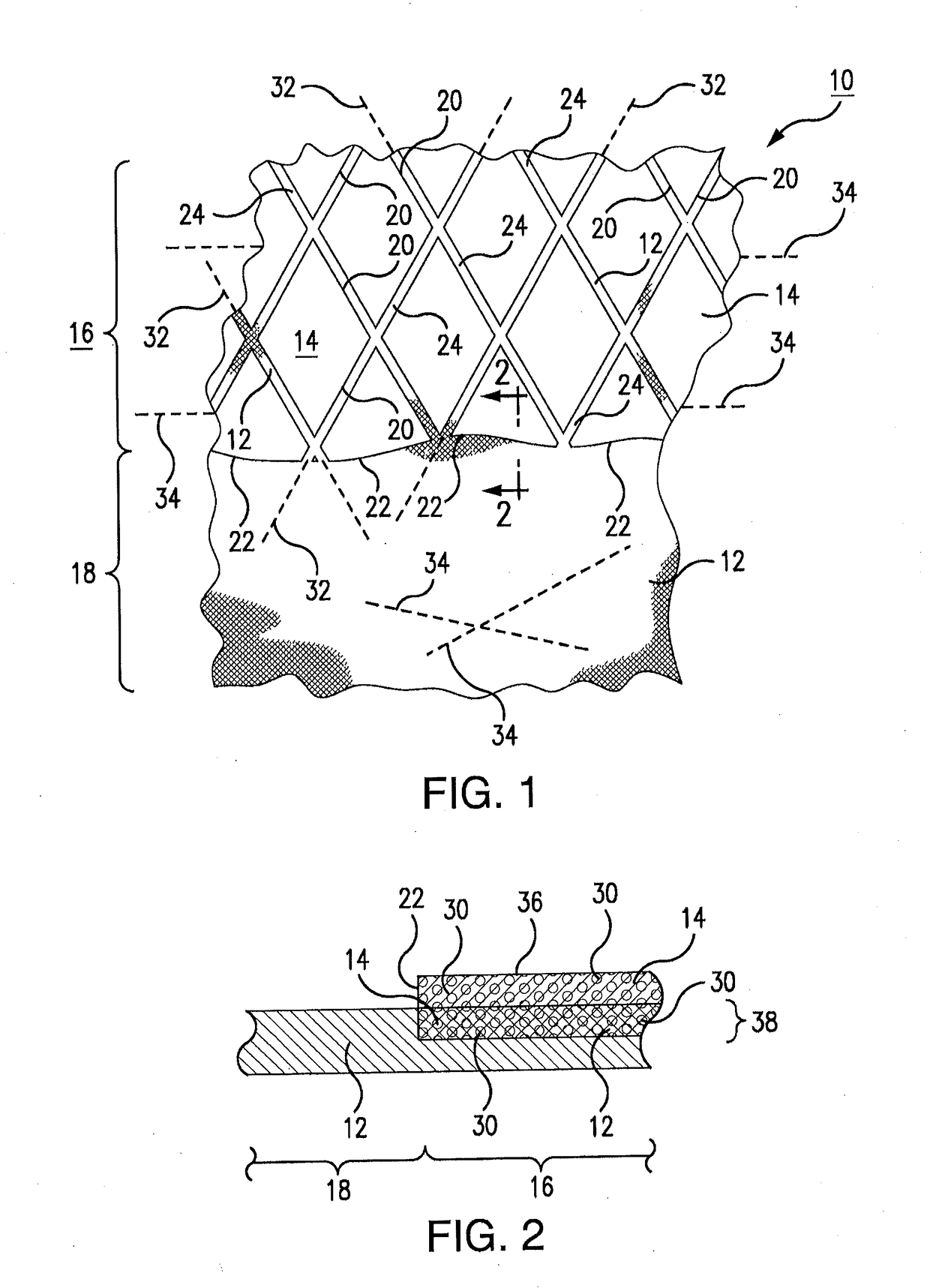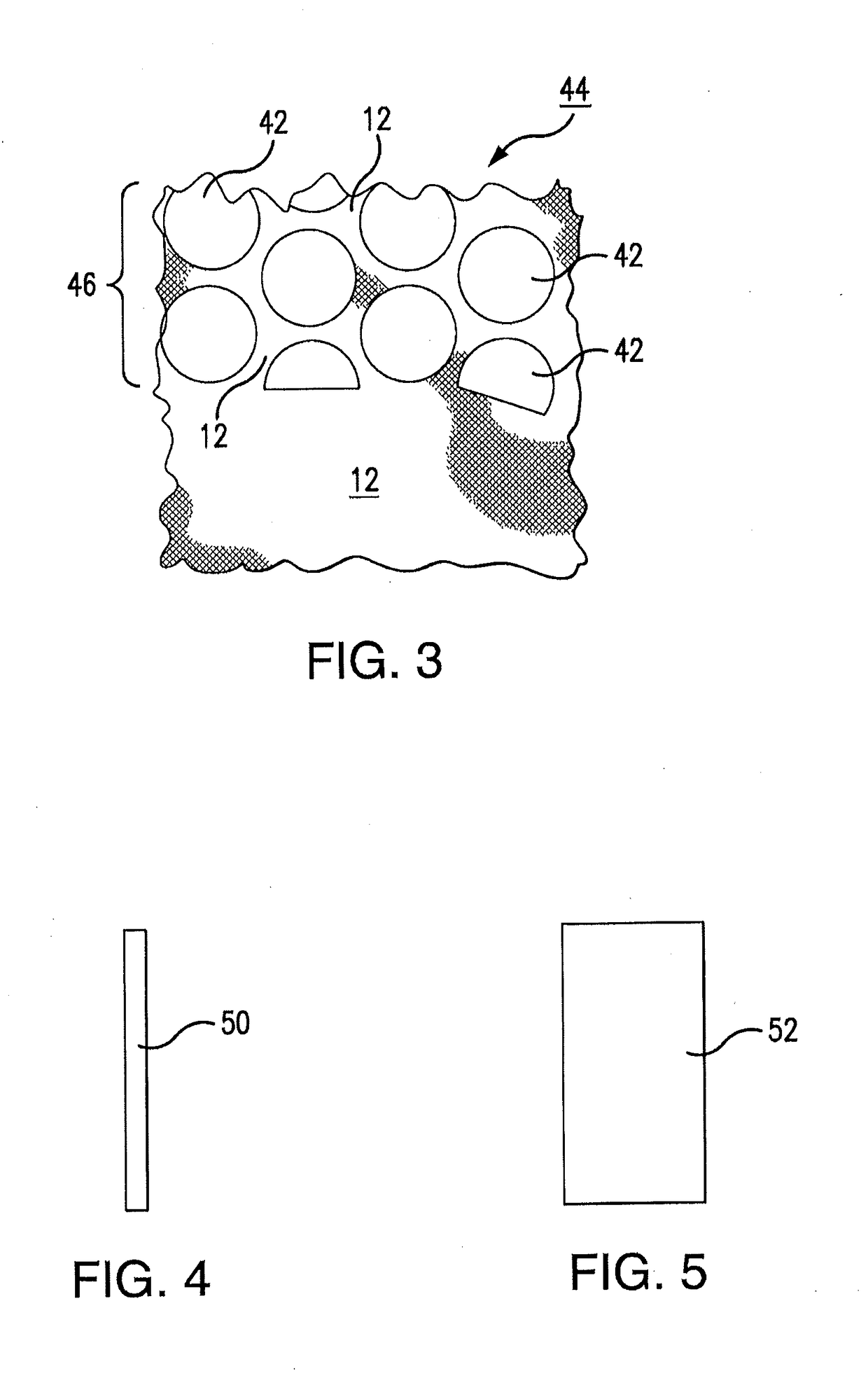), issued Jul. 28, 1998, the known
ankle and
wrist weights are unsatisfactory because they place excessive stress on articulates and over time may cause minor
ligament tears, thus causing the articulates to become less stable and functional.
Another problem with the known systems is that they shift position during use.
The conventional weights cannot be maintained in a desired position with respect to the wrists and ankles.
The problem is aggravated by the fact that conventional weights are filled with shiftable
particulate material and / or liquid.
Shifting of the known systems during use imparts excessive joint forces that, over time, can damage tendons, ligaments, and other tissues surrounding and comprising body articulates.
Moreover, conventional weights are not supported except by the articulates being exercised.
The inertial force of the weight applies an excessive force on both the shoulder and
elbow in an uncontrolled manner.
This inertial pulling effect places undue stress on the tendons, ligaments, and other tissues surrounding and comprising the upper extremity, causing the joints to lose their elasticity and
functional stability over time.
In general, a weight system that is concentrated far below the muscular
insertion point of the respective joint, for example distal to the
elbow near the
wrist, will cause excessive strain of the tissues surrounding and / or comprising the
joint cavity over time.
Training with shiftable and poorly distributed weights can also cause unbalanced
muscle strength.
For example, if
wrist weights are used for a sports
specific function involving rapid arm movements, the induced inertial forces about a joint may be too great to adequately
train the smaller, stabilizing musculature of the shoulder.
In general, conventional weight-training systems are poorly distributed, shiftable, subject to undesired inertial effects, unnecessarily complicated, inconvenient to use, and / or too expensive to manufacture.
Among other things, long, one-dimensional weights cannot be applied effectively to the
human body's three-dimensional musculoskeletal structure.
In addition, while sometimes effective in increasing the resistance to an initiated motion, such as starting a forward throw, the one-dimensional weights tend to undesirably increase the inertial force that has to be placed on the body to stop the motion, because, among other reasons, they tend to slip within the pockets within which they are located.
Locating weights in pockets is disadvantageous because the weights tend to slip in the axial direction of the pocket, such that the weight moves relative to the pocket during the motion and becomes displaced from the desired position.
Locating one-dimensional weights around a person's limb (arm or leg), not just along one side of the limb, would make the article difficult to put on and take off.
In addition, a one-
dimensional weight provides resilient, bending resistance to motion in a direction that is orthogonal to the
long axis of the weight, but does not provide such resilient, bending resistance to motion that is parallel to its
long axis.
This placement proves problematic, as it requires additional support of the weight from smaller, synergistic muscles while ineffectively targeting the desired gross musculature.
As a result, the weight tends to disadvantageously distort the natural motions of the body part that is being exercised,
The “finger trap” mechanism mentioned in the '441 publication would constrict around the extremity when longitudinal force is applied to it which could create excessive
constriction of the extremity and an uncomfortable
sensation to the user.
A problem with resistance bands of the type mentioned in the '441 publication is that the amount of resistance created by such a band changes as a function of the band's length.
This could be problematic for the user because when a joint is moved to its end
range of motion, thus fully stretching the resistance band, the associated musculature is in a suboptimal position for
force generation.
Another problem with the system referred to in the '441 publication is that the configuration and locations of the resistance bands would not stress the musculature throughout the full range of joint motion.
Yet another problem with the system referred to in the '441 publication is that the resistance bands are placed inside channels or pockets or sandwiched between
layers of fabric.
The arrangement adds unnecessary complexity, and there are also other problems and disadvantages associated with the system referred to in the '441 publication.
 Login to View More
Login to View More  Login to View More
Login to View More 


